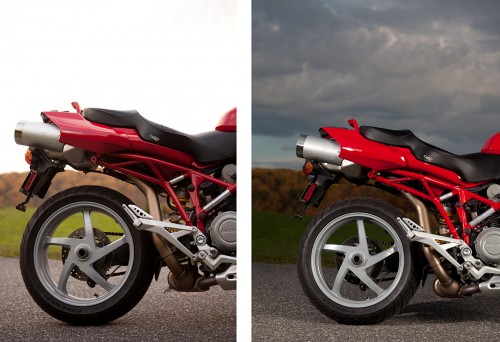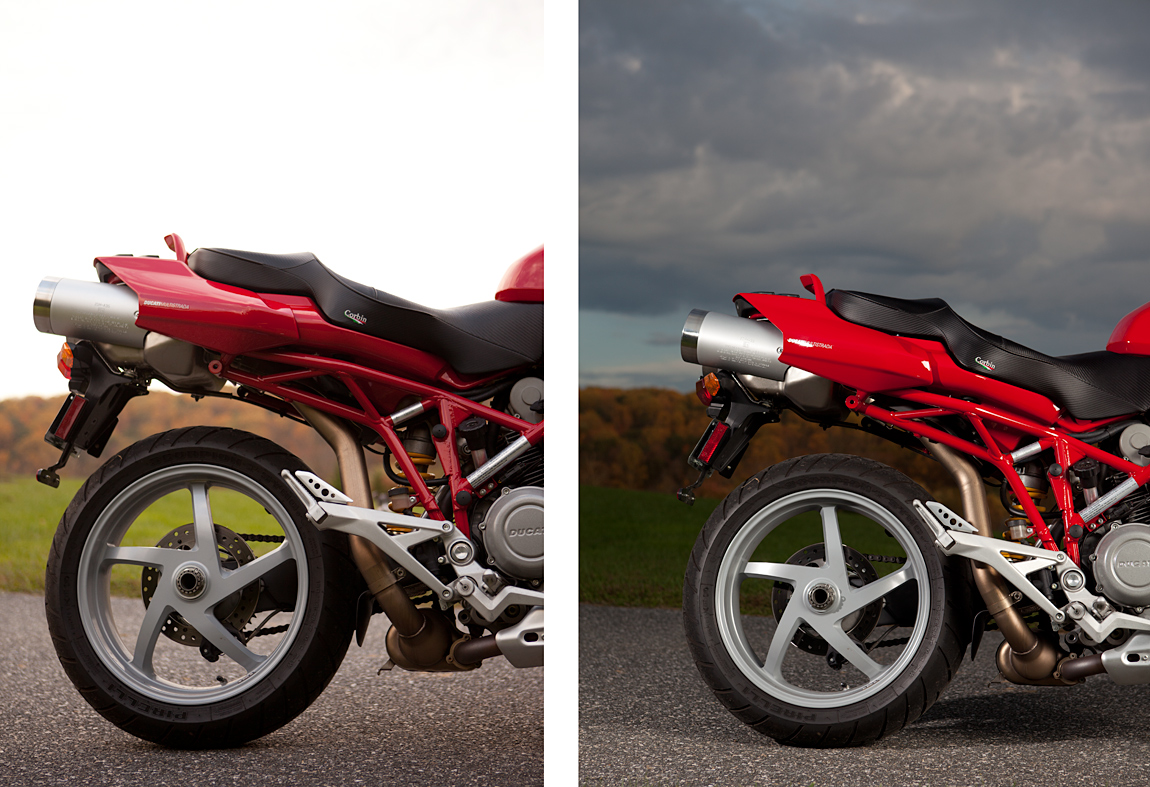Off-camera flash is a great way to add drama and interest to a photo. Don’t get me wrong, ambient light can make great photos, but not always. In this example photo, to properly expose the motorcycle, I would have to blow out (bright white, no detail) the sky. I wanted a dramatic sky so I set up my strobes (Elinchrom Ranger Quadra RX). Off-camera/manual flash can be intimidating at first but once you break down the process, it isn’t bad at all.
There are essentially two things that make a strobed photo: ambient light and supplemental light. First, don’t worry about the strobes and just expose for however you want the ambient lighting to look. In this case, I wanted detail in the clouds so I picked an exposure to do that while keeping the shutter at 1/200 so the strobes could still sync. Usually, 1/200 sec. is a safe number. If you go faster than that, you may end up with a black/dark bar at the bottom of the frame because the shutter is actuating faster than the strobes can fire. Once you have the ambient to your liking, add the strobe(s) and fine tune their power, direction, and flash-to-subject distance until the subject is lit to your liking. It’s as simple as that, two steps!
Both of these shots are straight out of the camera. The strobed shot would’ve been better if the softbox was at a different angle that didn’t reflect right over the Ducati sticker. For the strobists out there, there was a 53″ octabox camera-right and a bare Quadra to the left of the bike.



Leave a Reply